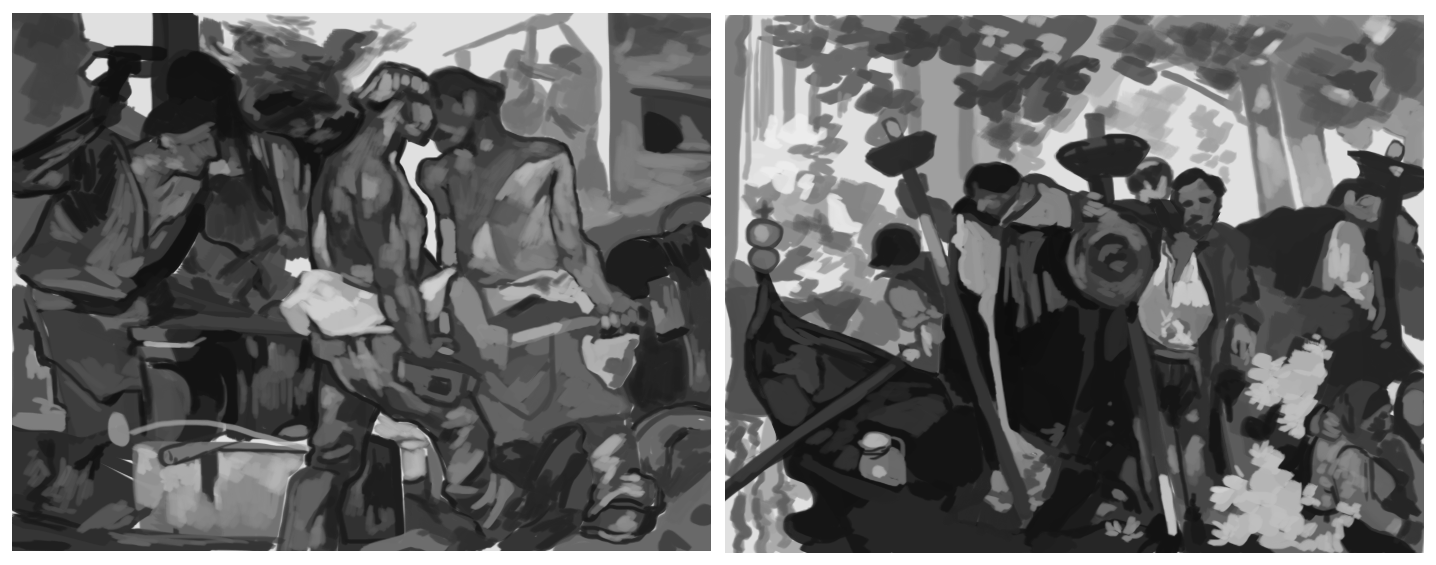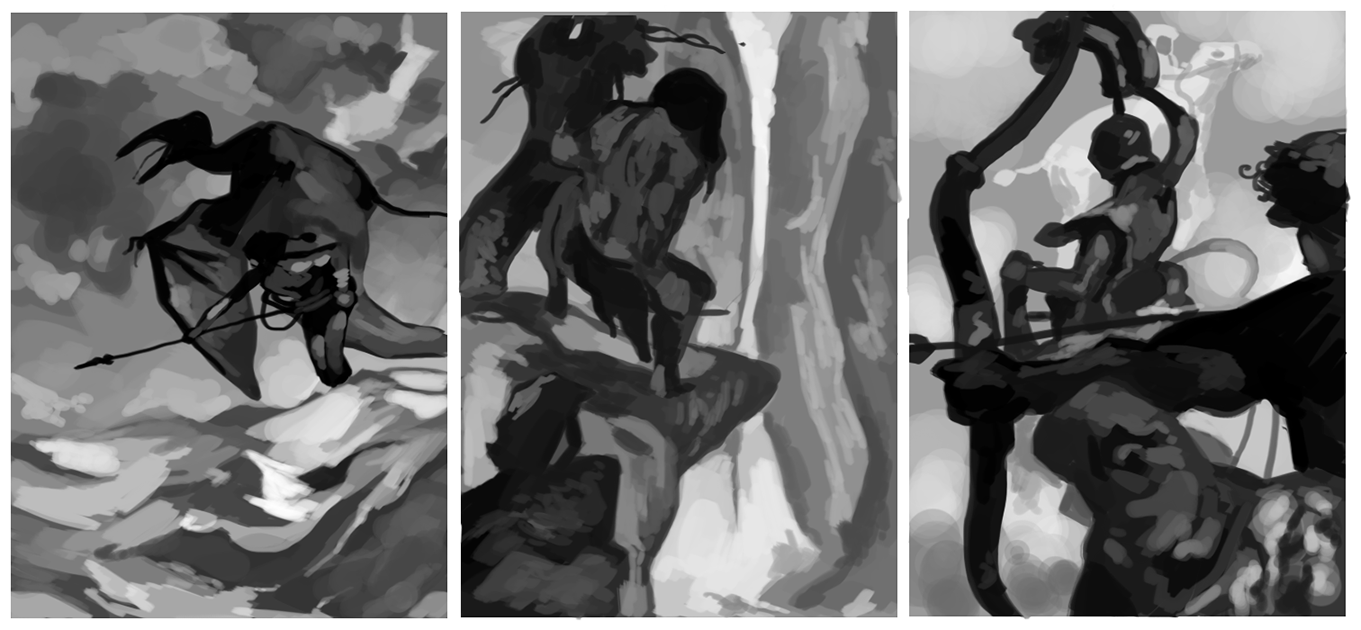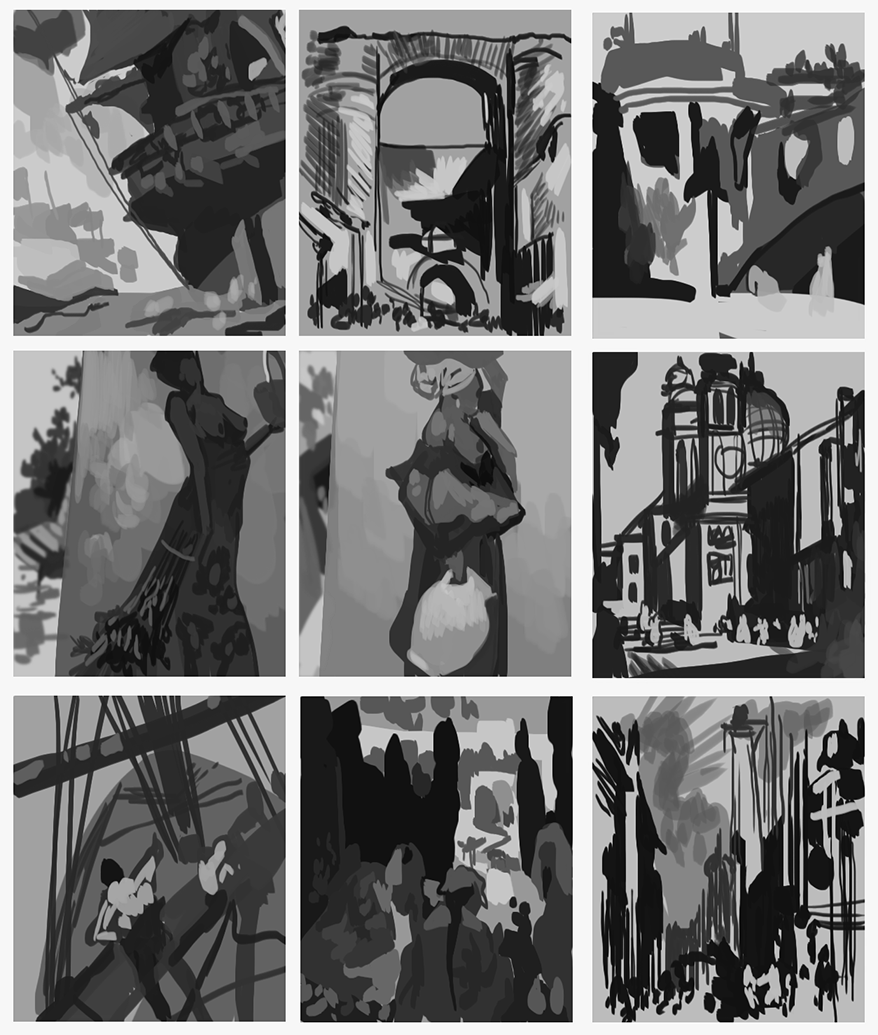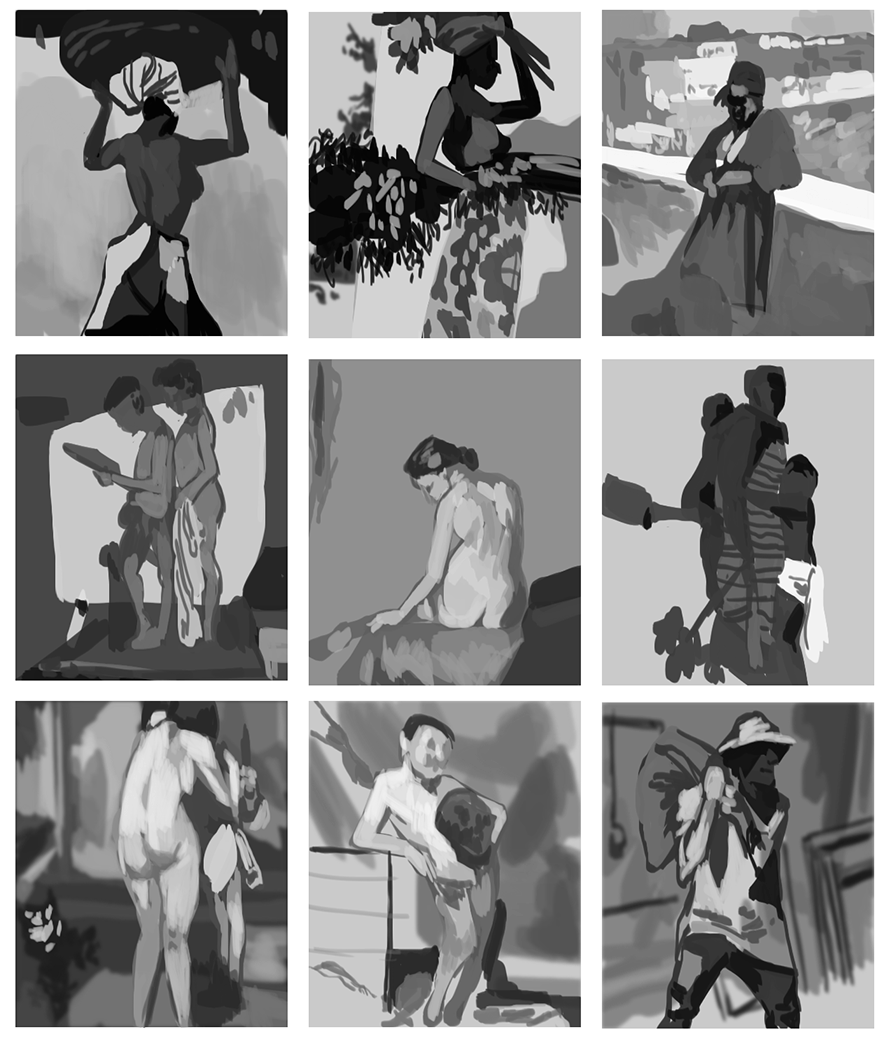|
Like the sun rises and sets, there is always hubbub in the art community around copying...and rightfully so. No self-respecting artist wants to be a glorified scanner, nor should they want to make a mockery of another artist's work for short-term gain. Then there's the whole 'getting sued' thing. The word 'copying', however, should come with an asterisk: there's a big difference between mindless copying and studying. Any artist that wants to improve on a technical and personal level needs to know this. To study another's craft is to go in with the intent of bettering yourself. Of carving out your unique voice. This can be strengthening your composition by asking how, say, a commercial illustrator makes their work so readable. This can be improving your technique, such as figuring out a fine artist's strong grasp on light and shadow (though you should be studying from life, too). Perhaps your favorite artists have a certain style that just speaks to you. All are valid reasons to pick up a pen and do some homework. That doesn't mean mindlessly copy and hope for the best. Studying is a conscientious act, with a goal to achieve after a set of repetitions. Studying from just one artist can increase the risk of copying, too, which is an easy enough problem to fix: have more than one inspiration. Just like a healthy diet can't solely rely on carbs, so too does a healthy artistic foundation need a variety of sources to pull from. Growing up I was surrounded by inspiration. I was heavily influenced by Pokemon, Final Fantasy and more books than I could shake a stick at. Jerry Pinkney, Janell Cannon, Mary GrandPré, Yoshitaka Amano and Pete Lyon are all incredible illustrators who did so much to capture my imagination (and still do). To this day, I have more artistic inspirations than I can count. Commercial illustrators, fine artists, musicians, game designers, fashion designers. For now, I'm going to look at some studies I did in 2017 and 2018 of two of my favorite painting masters: Frank Brangwyn and Jeffrey Catherine Jones. I don't remember where I first found Frank Brangwyn's work, but I do remember being completely floored by it. He's been a major painting inspiration for years for his beautiful technique and deceptively complex compositions. I say deceptively because, despite so many subjects and details, they remain relatively easy to break down into two or three parts. It's the base of any good composition: less is more. Also...his colors. Oh. They're so buttery I could cry. I did these studies in grayscale, however, to focus more on tone and composition. They took me about an hour and a half to complete each, which will contrast the Brangwyn studies I did below. Doing these helped remind me how to gather up all my minor and major details in a way that's never confusing. Jeffrey Catherine Jones is another illustrator whose work just pops. Bold compositions with simplistic backdrops, combining the best in contemporary commercial illustration and classical paintings. Compared to Brangwyn's mundane romanticism, her work leans toward moody. Surreal. Even harsh. I'm a huge fan of how she uses black. There's almost always a striking black spot somewhere in the work, to draw the eye but not necessarily overwhelm. Both of these artists represent different facets of my work I want to continue nurturing: warm, dreamy romanticism with intense, somber surrealism. *chef's kiss* A match made in heaven. Not every study needs to (if you'll pardon the pun) be a masterpiece. The quick ones, in fact, kill two birds with one stone: they help you loosen up and they force you to understand complex subjects on a basic level. There's a reason why you draw certain subjects faster than others. If you can't break something down in a short amount of time? It's likely you have a weak spot that need tending to. While not all of these turned out very nice (indeed, only a few did), they put my shortcomings on full blast. Told me where I took too long. Showed me where I didn't feel quite so comfortable (like cityscapes). These took me about twenty to thirty minutes to do. I also do studies that take a few minutes each, which I'll be uploading here in the future. One of my favorite resources is to put on a dance choreography video, pause at random intervals and draw the interesting poses I get. These also took twenty to thirty minutes. With the exception of the top right-hand corner, I didn't push the values on these enough. That's something I need to be careful of in the future: muddy, middle-of-the-road values. Yuck. I have plenty more master studies I plan on doing, as well as studying from some of my favorite films/shows. Inspiration is everywhere. Enjoy it! Being concerned about copying is an important part of being an artist. I have to constantly beware the subconscious inspiration my mind takes every time I do a commission. The thing is...none of us are dictionaries. It would be more accurate to describe the human mind as a thesaurus: a dynamic, and flawed, compendium that takes in the world and approximates it with similar words. Would you rather attempt to flee the inevitable and risk subconscious copying...or be smart about your influences? Instead of turning 'copying' into a dirty word, let's be a thesaurus. Study from the masters and always cite your sources. Don't be a morally bankrupt clown and rip artists off. I have new studies coming up, as well as a process post on one of my favorite portfolio pieces. Stay tuned!
0 Comments
Your comment will be posted after it is approved.
Leave a Reply. |
AuthorHere I post WIPs, sketches, speedpaints, thumbnails and anything else thrown into the veritable stew of artistic process. Archives
January 2021
Categories
All
|
ServicesBook Covers
Illustration Character Art Portraits Packaging Art Concept Art |
AboutCommercial illustrator and designer currently available for short-term and long-term freelance work.
|
© COPYRIGHT 2015. ALL RIGHTS RESERVED.
|




 RSS Feed
RSS Feed